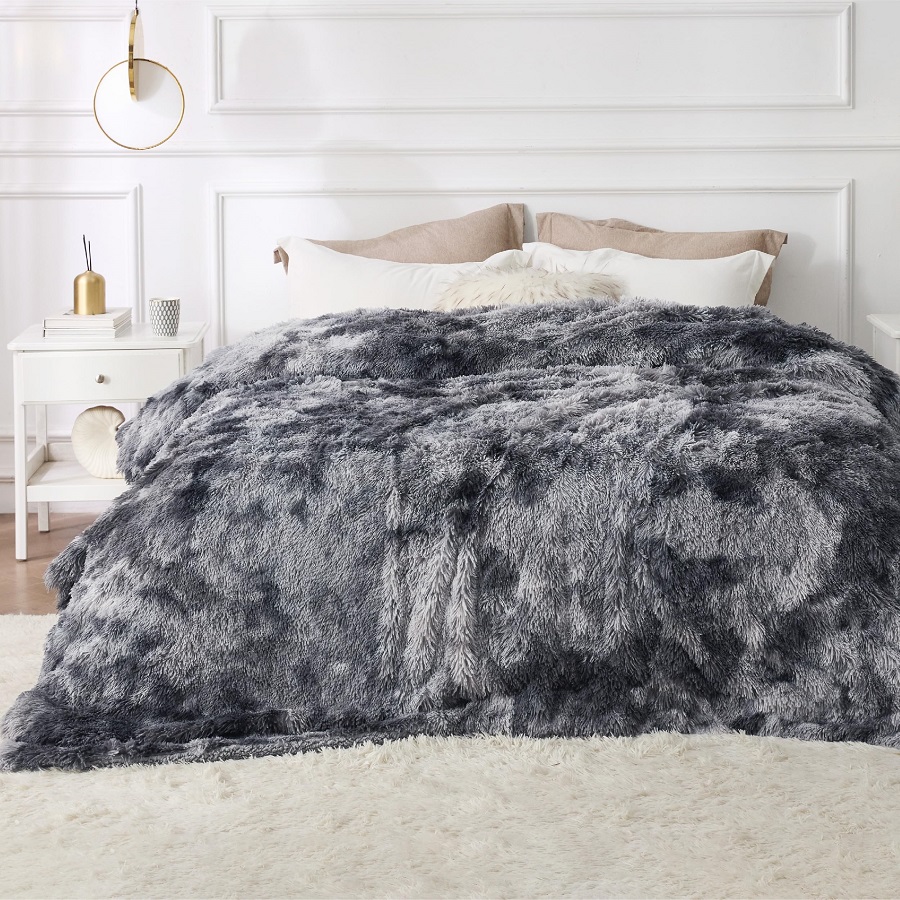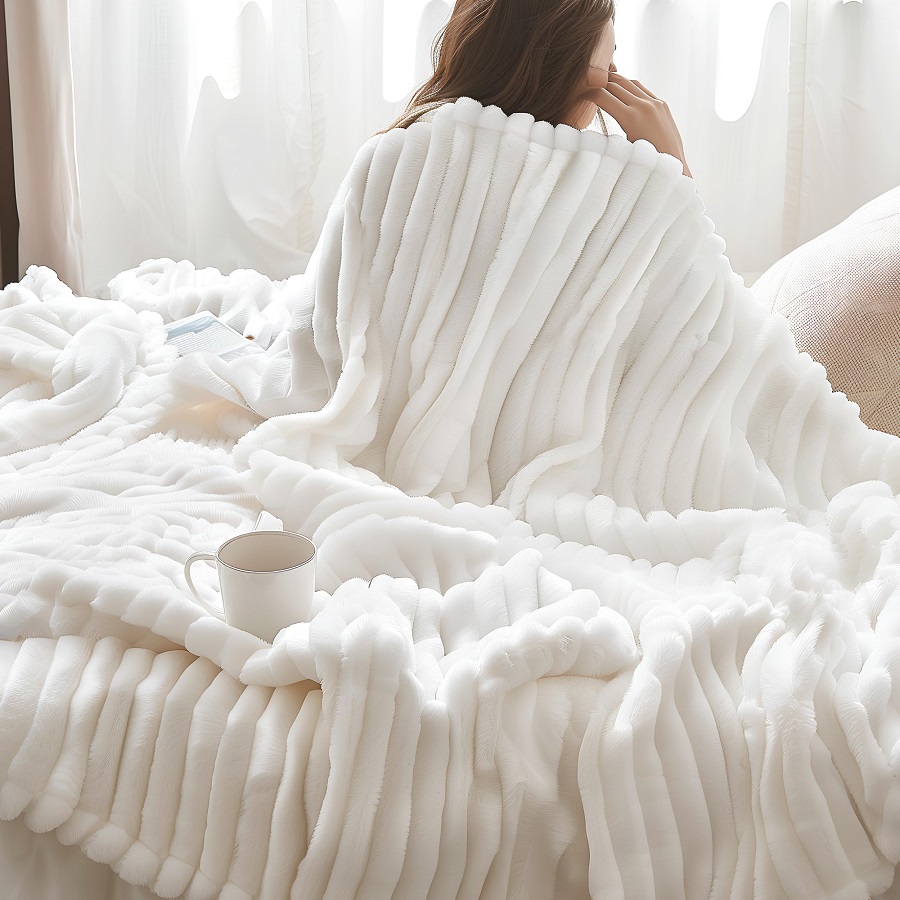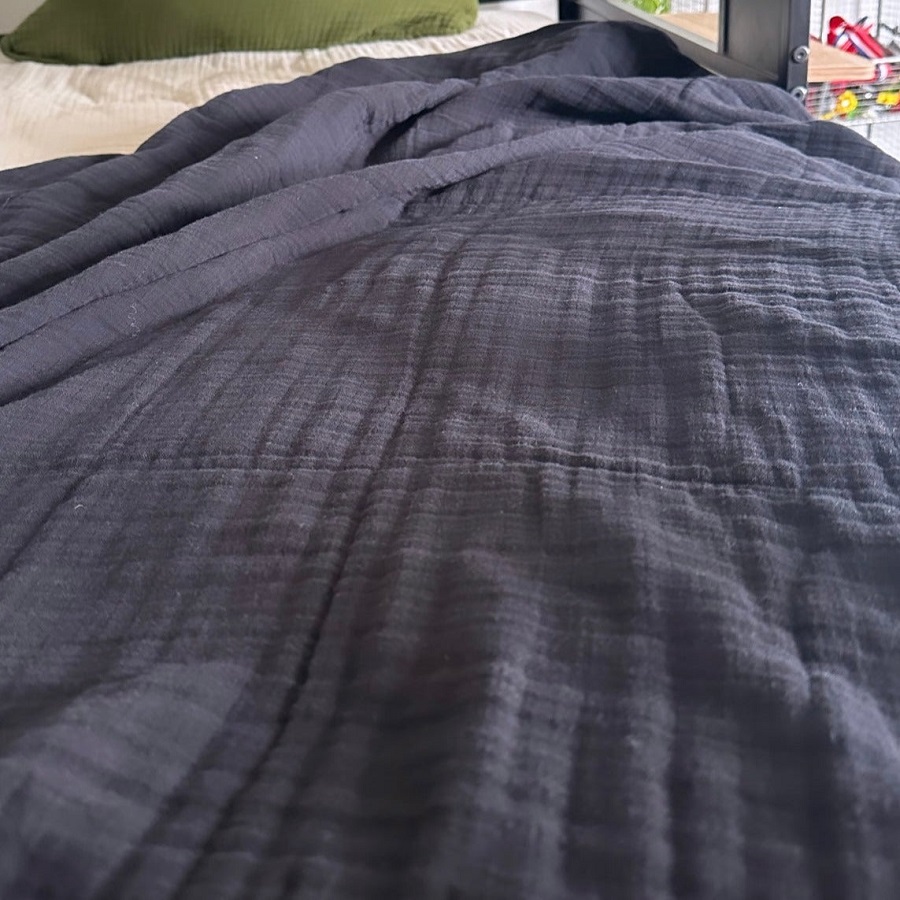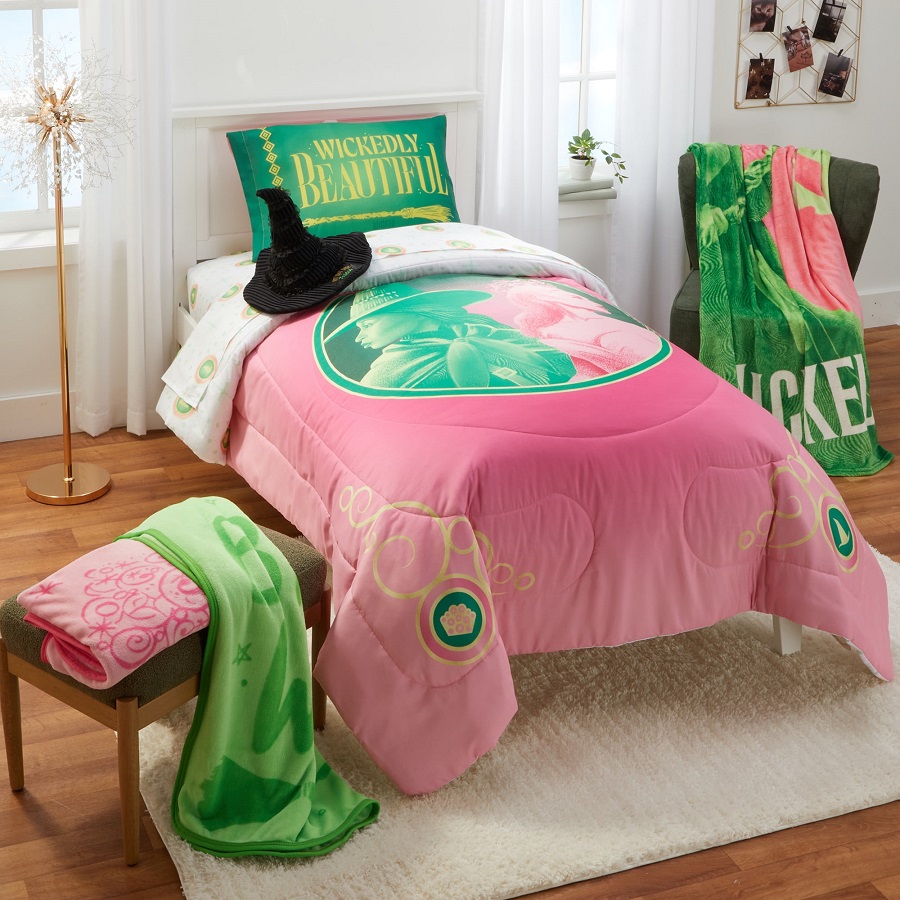Understanding Full Size Mattress Dimensions
A full-size mattress is usually 54 inches in width and 75 inches in length. But, it’s good to measure your mattress. You may find slight size differences depending on the maker. Also, consider the mattress depth, which varies too, often between 8 to 14 inches.
Knowing your full bed’s exact size helps you pick the right blanket. It should cover the mattress and give enough overhang. This means the blanket drapes well on all sides for comfort and looks.
Standard Blanket Sizes for Full Beds
When it comes to dressing a full bed, the blanket size matters. The right dimensions not only affect comfort but also the bed’s appearance. Below is a rundown of standard blanket sizes that complement a full bed:
- Full/Double Blanket: Typically comes in at 80 inches wide by 90 inches long, providing a neat fit with ideal overhang for a standard full mattress.
- Queen Blanket: Measuring 90 inches wide by 90 inches long, this size allows for more draping and can be a good choice for those who prefer extra material to snuggle into.
- King Blanket: At 108 inches wide by 90 inches long, a king blanket offers extensive coverage, suitable for those who seek ample room or share their bed.
Picking out the most suitable blanket means considering how you’ll use it. If you sleep alone and tend to stay put, a full/double blanket might suffice. If you share the bed or like extra coverage to wrap around, contemplating a queen or king size could be wise. Remember, the perfect blanket size enhances not just sleep quality but also the visual appeal of your bedroom.
Choosing the Right Blanket Size: Factors to Consider
When picking a full-size blanket, several factors impact your choice. Here’s a breakdown:
Personal Sleeping Style
- Sleep Alone or With Someone? If you share your bed, consider a queen or king blanket for extra space.
- Restlessness: More space prevents uncovering if you move a lot.
Mattress Dimensions
- Width and Length: Ensure the blanket covers your full mattress adequately, ideally draping over the edges.
- Mattress Depth: Thicker mattresses need bigger blankets for proper coverage.
Climate Considerations
- Cold Climates: Opt for larger, heavier blankets for warmth.
- Warm Climates: Lighter, smaller blankets might suffice.
Blanket Use
- Decorative Purposes: Larger blankets can enhance the room’s aesthetics.
- Practical Use: Ensure it’s easy to manage and doesn’t intervene with comfort.
Considering these factors helps tailor the choice to your specific needs, enhancing comfort and room presentation.
Benefits of Oversized Blankets for Full Beds
Choosing an oversized blanket for your full bed has several advantages. Larger blankets provide more coverage, ensuring there are no cold spots during the night. This is especially beneficial for those who move around a lot while sleeping or share their bed. An oversized blanket can drape elegantly over the sides of the bed, giving a luxurious and inviting look. This not only enhances comfort but also improves the overall aesthetics of your bedroom. Moreover, for those in colder regions, a larger blanket can offer additional warmth, adding to the cozy feel of your bedroom. When selecting an oversized blanket, consider the blanket’s dimensions in relation to your full bed to achieve the perfect balance between style and functionality.
Materials and Types of Full-Size Blankets
When choosing a full-size blanket, material matters. There are several types to consider:
Cotton Blankets
Cotton blankets are soft, breathable, and versatile. They work well for warmer climates and are easy to wash. Cotton comes in many weaves and weights, fitting both cool summer nights and chilly winters.
Fleece Blankets
Fleece is soft and very warm, making it a popular choice for snug comfort. These blankets are light, cozy, and generally more affordable than wool. They’re also easy to care for.
Microfiber Blankets
Microfiber offers a silky texture and is hypoallergenic. It’s a synthetic fabric that’s stain-resistant and durable. Microfiber blankets are good for those with allergies.
Down or Down-Alternative Blankets
These blankets are fluffy and warm, providing a luxurious sleeping experience. Down comes from bird feathers, while down-alternative is synthetic, suitable for allergy sufferers.
Electric Blankets
Electric blankets offer adjustable warmth with heating elements. They’re great for precise temperature control but require safety considerations during use.
Each material has unique benefits. Your choice depends on personal preference, climate, and care requirements. Pair the right blanket material with the perfect size for a cozy, comfortable bed setup.
 Caring for Your Full-Size Blanket: Tips and Tricks
Caring for Your Full-Size Blanket: Tips and Tricks
Proper care keeps blankets cozy and lasting longer. Here are easy tips and tricks to maintain your full-size blanket:
Read Care Labels
Always check the tag for washing and drying instructions. This avoids damage and keeps blankets in good shape.
Washing Frequency
Wash blankets every few weeks or as needed. For high-use blankets, consider washing more often to remove dirt and odors.
Gentle Detergent
Use mild detergent and follow instructions on the label. Harsh chemicals can damage fabrics and wear out blankets faster.
Avoid High Heat
Don’t use high heat when drying. It can shrink and damage blankets. Aim for air drying or use a low heat setting.
Storage Solutions
Store clean blankets in a dry, cool place. Avoid damp areas that can cause mold or musty smells.
Spot Clean When Possible
For small stains, spot clean instead of washing the whole blanket. Use a gentle cleaner and let the area air dry fully.
Seasonal Care
For seasonal storage, wash and dry blankets before tucking them away. This keeps them fresh and ready for next use.
Fluffing Up
After washing and drying, fluff blankets to maintain their softness. Simply shake them out or tumble on low for a few minutes.
Specialty Blankets and Their Unique Uses
Different blankets cater to specific needs. Specialty blankets like throws, baby blankets, and electric blankets are each unique. Throws are decorative, baby blankets have safety standards, and electric blankets offer heat control. Choosing the right type ensures both style and comfort for every situation. Here’s a snapshot of their unique uses:
Throws: Versatile Comfort and Style
Throws are smaller than full-size blankets but big for extra warmth. They’re great over couches and chairs, adding color to decor. They’re perfect for naps or chilly evenings.
Baby Blankets: Safety and Comfort for Little Ones
Baby blankets come in various sizes like cradle, stroller, or crib. They provide comfort and warmth for different stages, from newborns to toddlers. Always prioritize safety, following guidelines that recommend no loose blankets for infants.
Electric Blankets: Controlled Warmth
Electric blankets allow you to adjust heat. They’re useful for cold nights or when you need specific heat levels. Always follow safety instructions to prevent any hazards. This type of blanket is ideal for someone who wants warmth customization.
Specialty blankets serve more than just warmth; they also enhance lifestyle and decor. Whether you need a stylish throw or a safe baby blanket, picking the correct type improves every use case.
 Common Questions About Full-Size Blankets Answered
Common Questions About Full-Size Blankets Answered
When it comes to dressing your full-size bed, picking the right blanket size is key. To help you make the best choice, here are answers to some common questions about full-size blankets:
How Big is a Full-Size Blanket?
A typical full-size blanket measures about 80 inches by 90 inches. This size gives enough coverage for full-size mattresses, which are generally 54 inches by 75 inches. It allows for a comfortable overhang on each side and the foot of the bed.
Is a Full/Double Blanket the Same as a Queen-Size Blanket?
No, a full/double blanket is not the same size as a queen. Queen blankets are usually 90 inches by 90 inches, so they’re slightly larger. If you want more coverage, a queen-size might be better for your full bed.
Can I Use a King-Size Blanket on a Full Bed?
You can, but it will be quite large. A king-size blanket is about 108 inches by 90 inches. It will cover your full bed with lots of overhang on the sides. This could be comfy in winter but might be too bulky for some.
Do Blanket Sizes Include the Thickness of the Mattress?
Typically, blanket sizes just cover the top surface area of the bed. Consider your mattress thickness if you want the blanket to hang over the edges. Thicker mattresses may need larger blankets for a proper fit.
How Should I Care for My Full-Size Blanket?
Always read the care tag. Most blankets should be washed in cool water with mild detergent. Avoid high heat when drying to prevent damage. If it’s a large blanket, you might need a bigger machine or hand wash.
By understanding these key points about full-size blankets, you can choose the one that meets your needs for comfort and style. Remember, the right blanket size can enhance your sleep experience and the look of your bedroom.
